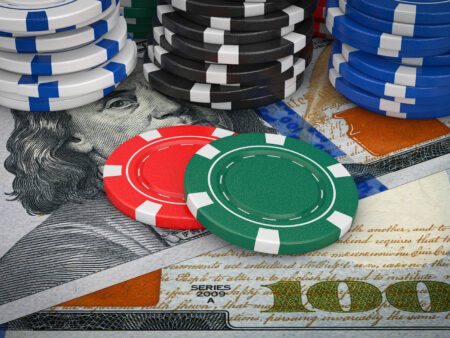Discover the underlying mathematics of roulette and how you can use it to your advantage. Learn about the house edge, the law of large numbers, and strategies to maximize your chances of winning.
Beating the House: The Mathematics of Roulette
Roulette has long been one of the most popular casino games, captivating players with its spinning wheel and the promise of big wins. But beneath the glitz and glamour lies a game that is deeply rooted in mathematics. Understanding the mathematical principles behind roulette can give players a strategic advantage, helping them make more calculated bets and increase their chances of beating the house.
The Basics of Roulette
Before delving into the mathematics, let’s start with a brief overview of how roulette is played. The game consists of a wheel with 37 or 38 numbered pockets, depending on whether it’s the European or American version. Players place their bets on the roulette table, predicting where the ball will land once the wheel is spun. The payouts vary depending on the type of bet, with higher payouts for riskier bets.
Now, let’s dive into the fascinating world of roulette mathematics.
The House Edge
In every casino game, the house has an edge, and roulette is no exception. The house edge is the percentage of each bet that the casino expects to keep over the long run. In roulette, the house edge is determined by the presence of the green zero(s) on the wheel. In European roulette, where there is only one zero, the house edge is 2.7%. In American roulette, with both a single and double zero, the house edge increases to 5.26%. This means that, on average, the casino will keep $2.70 or $5.26 for every $100 wagered.
Understanding the house edge is crucial because it allows players to make informed decisions about which version of roulette to play. By choosing European roulette over the American version, players can significantly reduce the casino’s edge and improve their odds of winning.
The Law of Large Numbers and Expected Value
One of the fundamental concepts in probability and statistics that applies to roulette is the Law of Large Numbers. The Law of Large Numbers states that as the number of trials (in this case, spins) increases, the actual probability will converge to the expected probability.
Essentially, this means that in the long run, the outcomes of roulette spins will align with the expected probabilities. For example, if you bet on red in European roulette, which has 18 red pockets out of a total of 37, the expected probability of winning is 18/37. Over time, if you play enough games, you can expect to win approximately 48.65% of your bets.
Another useful concept is the expected value, which is a measure of the average outcome of a random variable. In roulette, the expected value is used to assess the profitability of different bets. It is calculated by multiplying the probability of each outcome by its respective payoff and summing up the results.
For instance, let’s consider the even-money bet of betting on red. The probability of winning is 18/37, and the payoff is 1:1. By multiplying the probability by the payoff, we get an expected value of 0.4865. This means that, on average, for every $1 bet on red, you can expect to win back $0.4865. Although it may seem like a small margin, it’s essential to understand that the expected value is a long-term measure and not a guarantee for short-term outcomes.
Strategies for Maximizing Wins
While roulette is ultimately a game of chance, there are strategies that players can employ to maximize their chances of winning:
- Martingale System: This strategy involves doubling your bet after every loss and reverting to the original bet after a win. The idea is to recoup all previous losses and make a profit. However, it’s worth noting that the Martingale System requires a substantial bankroll and can lead to significant losses if an extended losing streak occurs.
- The Labouchere System: With this strategy, players create a sequence of numbers and bet the sum of the first and last numbers in the sequence. If the bet wins, those numbers are crossed off. If it loses, the sum of the lost bet is added to the end of the sequence. The goal is to cross off all the numbers in the sequence, which results in a net profit.
- The Fibonacci System: Based on the Fibonacci sequence, this strategy involves betting the sum of the previous two bets. In case of a loss, the sequence is extended by adding the lost bet to the end. The Fibonacci system aims to recover losses gradually and minimize the risk of large bets.
- The D’Alembert System: This strategy involves increasing the bet by one unit after a loss and decreasing it by one unit after a win. The goal is to create a balanced betting system that allows for small, incremental wins over time.
While these strategies can be fun to try, it’s important to remember that they don’t guarantee wins. Roulette is ultimately a game of luck, and it’s crucial to gamble responsibly and within your means.
Conclusion
By understanding the mathematics of roulette, players can make more informed decisions, increasing their chances of beating the house. From the house edge to the Law of Large Numbers and expected value, these mathematical concepts provide valuable insights into the game. However, it’s important to remember that roulette is a game of chance, and no strategy can guarantee consistent wins. As with any form of gambling, it’s essential to approach roulette responsibly and enjoy the game for its entertainment value.










